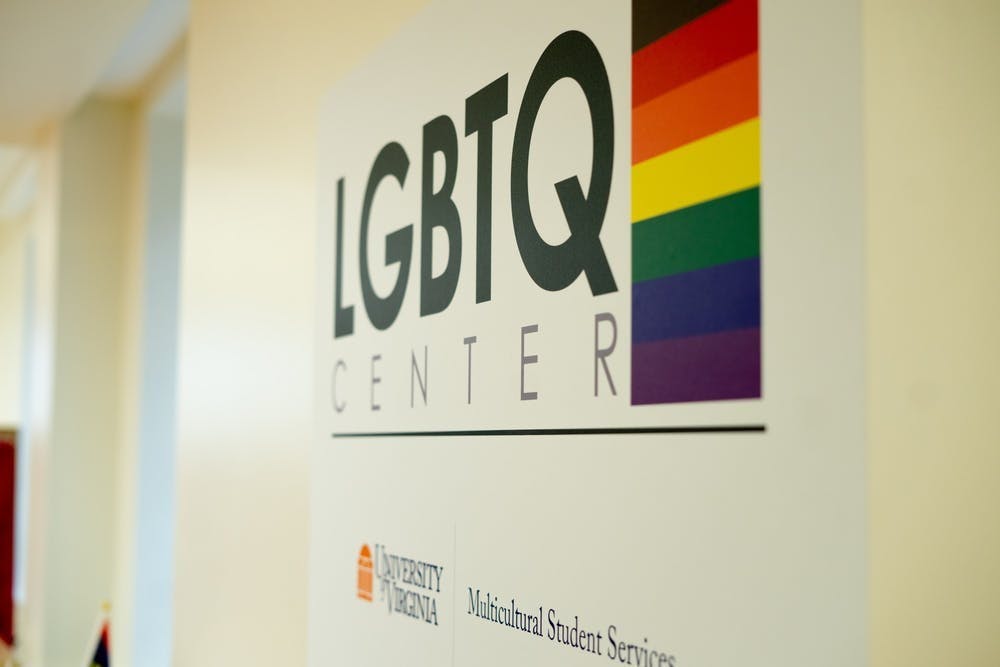Last week, the University moved the LGBTQ Center from its previously remote location in the basement of Newcomb Hall to a more accessible and visible location on the third floor. This move is part of the University’s strategic planning project, which seeks to make “a great and good University.” While endearing, the project does not take into account the ramifications of the move. The location change is potentially dangerous for LGBTQ+ students who may want to be among their peers without risking revealing their identity to the general student body. Making a designated safe space on Grounds less accessible to the vulnerable population is a large cost to pay for any improvements or benefits. The complications that could arise from this change illustrate the difficulties that LGBTQ+ students at the University face every day.
The third floor of Newcomb, while not exactly a tourist attraction, is still a highly visible space where many students may be passing time between classes or eating their meal. This visibility can be quite distressing to many students, as entering the LGBTQ Center is often tantamount to admitting that one is a member of the LGBTQ+ community. While this space is more accessible to all students now that it is in a prominent area on Grounds, students who are not out may still be wary of using the space due to the fear of any suspicion surrounding their identity.
The LGBTQ+ community at the University faces significant hardships in a city that still struggles with anti-LGBTQ acts. Recent events — such as the defacing of Beta Bridge when it honored black trans women — only highlight the immense issues that the community faces. Moreover, this is a community that, in the past, proclaimed they are “not gay” at every sporting event.
The University must take actions to make sure it protects its vulnerable LGBTQ+ students while it plans to make them visible. After all, Virginia experiences as many as 200 hate crimes every year, about 20 percent of which are motivated by sexual orientation or identity. Our society and the culture in which we live often do not value the lives of LGBTQ+ individuals. These recent incidents only show that this hate does exist at the University.
Ultimately, the decision to move the LGBTQ Center up to the third floor of Newcomb is a reflection of the hard work that the communities of marginalized students at the University have put in over the past years. However, the implementation is not without consequence — the issues that arise from moving the LGBTQ Center highlight the culture of homophobia that still surrounds the University.
Regrettably, there is no perfect answer to this problem. Leaving the LGBTQ Center in the basement of Newcomb may make LGBTQ+ students feel like they are hidden away — a reality far too common among members of the LGBTQ+ community. Nevertheless, the center’s current location raises these concerns of safety for students. While it is admirable that the University seeks to supply its students with adequate spaces, it is not sufficient to place these spaces in such exposed, visible areas.
This is not to say the LGBTQ Center is at fault in this endeavor — in fact, the Center and those in charge of it are working their hardest to try to provide a welcoming and safe community to all LGBTQ+ students at the University. The Center does have a separate door that allows students to enter privately. Rather, this shows that the issues surrounding LGBTQ+ students are more complicated and delicate than most other issues the University has solved in the past. Many CIOs and student organizations are not exactly welcoming to LGBTQ+ members in contrast to the acceptance they show to cisgender and heterosexual applicants. As such, there are often not many places for LGBTQ+ Hoos to go. However, in a sensitive time and place such as here and now, the University needs to do better in its attempts to protect and include some of its most vulnerable students. Trying to do good is simply not good enough. The University cannot simply rely on the Queer Student Union and other student groups to try and solve the problems that come with University initiatives. The question now is not who to blame for the current situation, but rather how to fix the problems that arise with its implementation.
Carson Flickinger is a Viewpoint Writer for The Cavalier Daily. He can be reached at opinion@cavalierdaily.com.
The opinions expressed in this column are not necessarily those of The Cavalier Daily. Columns represent the views of the authors alone.







